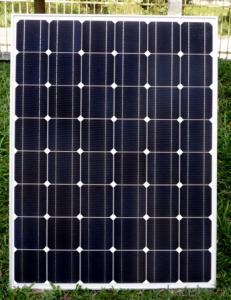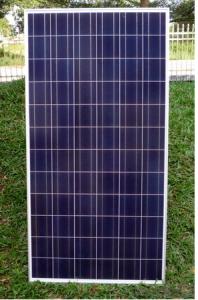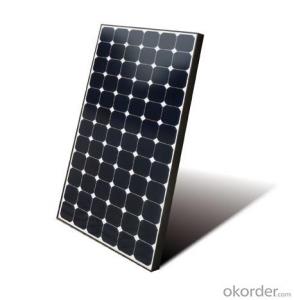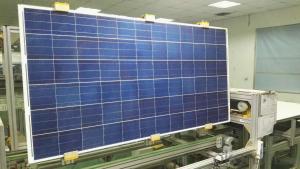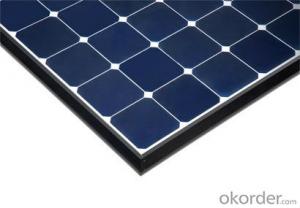Solar Energy Systems for Homes:CNBM Poly 60W Off Grid Solar System with 10 Years Warranty
- Loading Port:
- Shanghai
- Payment Terms:
- TT OR LC
- Min Order Qty:
- 100 watt
- Supply Capability:
- 1000 watt/month
OKorder Service Pledge
OKorder Financial Service
You Might Also Like
Specification
CNBM Poly 60W Off Grid Solar Sytem with 10 Years Warranty
Product description
Off-the-grid is a system and lifestyle[1] designed to help people function without the support of remote infrastructure, such as anelectrical grid. In electricity, off-grid can be stand-alone power system or mini-grids typically to provide a smaller community with electricity. Off-grid electrification is an approach to access electricity used in countries and areas with little access to electricity, due to scattered or distant population. The term off-the-grid (OTG) can refer to living in a self-sufficient manner without reliance on one or more public utilities. People who adopt this lifestyle are called off-gridders.[2]
Electrical power can be generated on-site with renewable energy sources such as solar (particularly with photovoltaics), wind, micro hydro, geothermal; with a generator or Micro combined heat and power with adequate fuel reserves. Such a system is called a stand-alone power system. In addition, it is possible to simply eliminate electric power such as in Old Order Amish and Old Order Mennonitecommunities.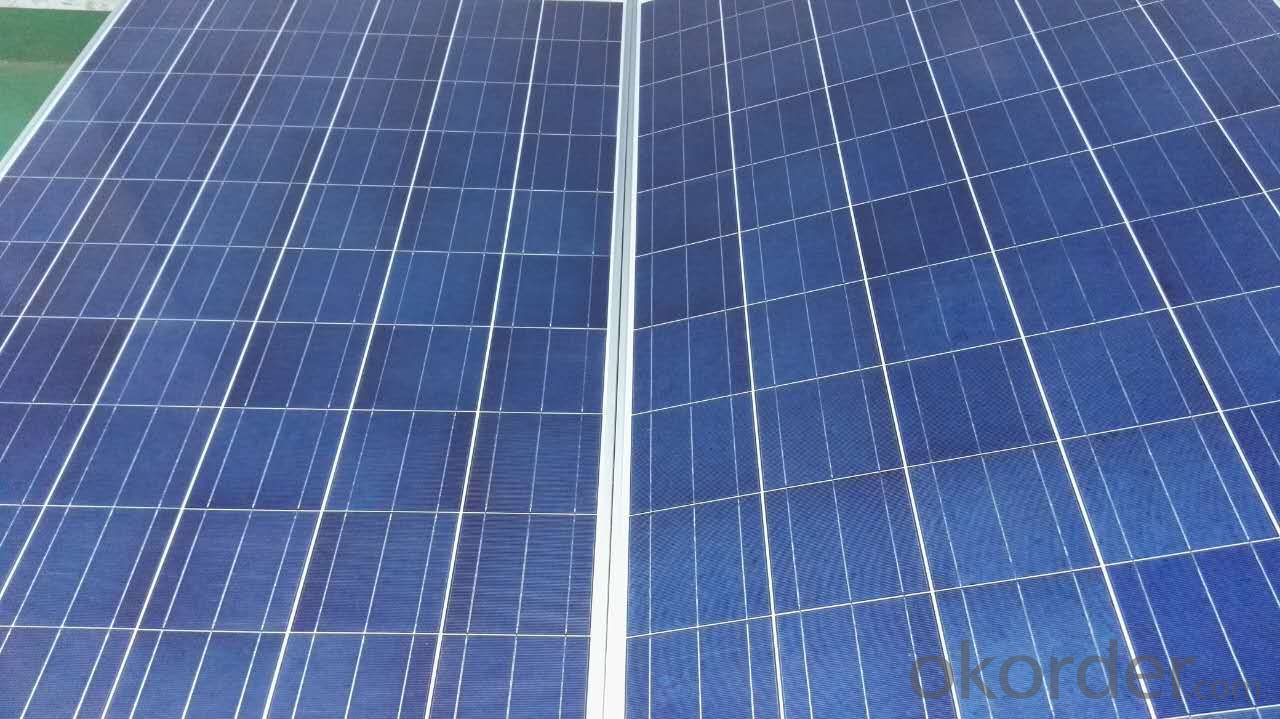
Application
Residential
Commercial
Industrial
Feature
Off-the-grid homes are autonomous; they do not rely on municipal water supply, sewer, natural gas, electrical power grid, or similar utility services. A true off-grid house is able to operate completely independently of all traditional public utility services. The idea has been recently popularized by certain celebrities including Ed Begley, Jr.[3] who stars in the Living with Ed[4] television show on the Home & Garden Television (HGTV) network. Actress Daryl Hannah promotes off-grid living and constructed her home in Colorado according to those principles, as does survival expert and Dual Survival co-star Cody Lundin,[5] who lives in a self-designed, passive solar earth house in the high-desert wilderness of Northern Arizona, collecting rainwater, composting waste, and paying nothing for utilities.[6][7]
Packaging
With carton and box
- Q: Can solar energy systems be used in areas with strict building codes or historical preservation restrictions?
- Indeed, it is possible to utilize solar energy systems in areas that have stringent building codes or restrictions on historical preservation. Although it may necessitate additional considerations and careful planning, integrating solar energy systems into the existing structures is certainly achievable. One approach to incorporating solar energy systems involves employing building-integrated photovoltaics (BIPV) or solar thermal systems that flawlessly blend into the building's design. These systems can be installed on rooftops, facades, or even utilized as shading elements, ensuring that the building's historical aesthetics or architectural integrity remain intact. Additionally, advancements in solar technology have facilitated the creation of more visually appealing solar panels, such as solar tiles or transparent solar windows, which harmonize with the building's existing materials. This simplifies the process of obtaining approval from historical preservation boards or building code authorities. It is crucial to note that in areas with strict building codes or historical preservation restrictions, the approval process for installing solar energy systems may be more complex. It may entail acquiring permits, conducting structural assessments, and closely collaborating with local authorities to ensure compliance with regulations. Nevertheless, due to the increasing recognition of the significance of renewable energy, many jurisdictions have established specific guidelines and provisions for integrating solar systems in historic areas. To summarize, it is feasible to utilize solar energy systems in areas with strict building codes or historical preservation restrictions by employing BIPV, solar thermal systems, or visually appealing solar panels. Although the approval process may require more effort, with proper planning and adherence to guidelines, it is possible to harness solar energy without compromising the architectural or historical significance of the area.
- Q: How does the tilt angle of solar panels affect their performance?
- The tilt angle of solar panels significantly affects their performance. A proper tilt angle helps maximize the amount of sunlight that hits the panels, leading to increased energy production. The optimal tilt angle varies depending on the latitude of the installation site and the season. Adjusting the tilt angle can help compensate for the changing sun angle throughout the year, ensuring that the panels can capture sunlight more efficiently and thus improve their overall performance.
- Q: How do solar energy systems impact social equity?
- Solar energy systems can have a positive impact on social equity by providing affordable and clean energy options to underserved communities. By reducing reliance on fossil fuels and the associated costs, solar energy can help alleviate energy poverty and promote equal access to electricity. Additionally, solar installations can create job opportunities, particularly in disadvantaged areas, contributing to economic empowerment and reducing inequality.
- Q: Can solar energy systems be installed on any type of building?
- Yes, solar energy systems can be installed on any type of building, including residential, commercial, and industrial structures. The feasibility of installation may vary depending on factors such as the available roof space, orientation, shading, and structural integrity of the building. However, advancements in solar technology have made it possible to adapt systems to various building types, allowing for widespread adoption of solar energy.
- Q: Can solar energy systems be used in powering music studios or recording studios?
- Certainly, music studios or recording studios can definitely utilize solar energy systems for power. Solar power systems present a clean and renewable energy source that offers a reliable and economical solution for operating various electrical equipment, including the energy-intensive equipment typically found in music studios. To harness sunlight and convert it into electricity, solar panels can be installed on the studio building's roof or any other suitable area. This generated electricity can then effectively power a diverse range of equipment, such as amplifiers, mixers, microphones, computers, lighting fixtures, and air conditioning systems. The required size of the solar power system will depend on the studio's energy needs. By analyzing the studio's energy consumption patterns and demands, solar energy experts can design and install a tailor-made solar power system that perfectly suits the studio's specific requirements. One major advantage of utilizing solar energy in music studios is the potential for significant cost savings. Traditional electricity sources, especially in commercial settings, can be quite expensive. However, by generating their own electricity through solar power, studios can reduce their reliance on the grid and potentially diminish their electricity bills. Furthermore, solar energy is an environmentally friendly and sustainable option. Music studios often consume a substantial amount of electricity, and using solar power can help minimize their carbon footprint and contribute to a more environmentally conscious future. It is important to note that solar energy systems can also be combined with battery storage systems. This allows music studios to store excess energy produced during the day and utilize it during periods of low solar generation or at night. This further enhances the reliability and independence of the solar power system. In conclusion, solar energy systems can be effectively employed to power music studios or recording studios. They provide a clean, renewable, and cost-effective solution that can meet the energy demands of these facilities while simultaneously reducing their environmental impact.
- Q: Can solar energy systems be used in cloudy or rainy areas?
- Yes, solar energy systems can still be used in cloudy or rainy areas. While solar panels do produce less electricity in cloudy or rainy conditions compared to sunny conditions, they can still generate power. Additionally, advancements in solar technology have made panels more efficient in low-light conditions, allowing them to harness energy even in cloudy or rainy areas.
- Q: Can solar energy systems be used in areas with frequent hurricanes?
- Solar energy systems are indeed viable in areas prone to hurricanes. Despite the potential damage hurricanes can inflict on these systems, there are strategies to mitigate the associated risks. To begin with, it is possible to design and install solar energy systems in hurricane-prone regions in a manner that can withstand strong winds. This involves employing sturdier mounting systems, reinforced frames, and secure anchoring techniques. Additionally, optimizing the orientation and tilt angle of the solar panels can minimize wind resistance. Furthermore, regular maintenance and inspections are crucial for identifying any potential issues or damages before a hurricane strikes. This proactive approach allows for timely repairs or replacements, ensuring the system remains operational and secure during severe weather events. In the event of a hurricane, it is important to have emergency protocols in place to safeguard the solar panels and other components. Temporary removal of the panels and indoor storage or utilization of protective covers to shield them from debris are some viable options. Moreover, the use of microinverters or power optimizers can enhance the resilience of solar energy systems in hurricane-prone areas. These advanced technologies enable each solar panel to function independently, minimizing the impact of damage to a single panel and preventing the entire system from shutting down. Lastly, solar energy systems can contribute to the resilience of communities during and after hurricanes. By incorporating proper battery storage, these systems can provide backup power during power outages, ensuring the continuity of essential services and meeting critical electricity needs like lighting, refrigeration, and medical equipment. In conclusion, although precautions must be taken to ensure the durability and functionality of solar energy systems in hurricane-prone areas, they can effectively harness clean and renewable energy even in the face of frequent hurricanes.
- Q: Can a solar energy system be installed on a mobile home?
- Yes, a solar energy system can be installed on a mobile home. In fact, mobile homes are great candidates for solar installations due to their smaller size and often more flexible roof configurations.
- Q: Can solar energy systems be used in powering government buildings or offices?
- Yes, solar energy systems can definitely be used to power government buildings or offices. In fact, many governments around the world have already adopted solar energy as a sustainable and cost-effective solution to meet their electricity demands. There are several reasons why solar energy systems are ideal for powering government buildings or offices. Firstly, government buildings often have large rooftop areas or open spaces that are suitable for installing solar panels. These panels can convert sunlight into electricity, which can then be used to power the buildings' lighting, HVAC systems, and other electrical appliances. Secondly, solar energy systems offer significant cost savings over time. While the initial investment may be higher compared to traditional energy sources, solar panels have a long lifespan and require minimal maintenance. This makes them a financially attractive option for government agencies, as they can reduce their reliance on expensive grid electricity and save taxpayer money in the long run. Moreover, by using solar energy, government buildings can significantly reduce their carbon footprint and contribute to environmental sustainability. Solar power is a clean and renewable source of energy that produces no greenhouse gas emissions during operation. This aligns with the global effort to combat climate change and meet sustainability goals. Furthermore, solar energy systems can also provide a reliable source of electricity, especially when combined with energy storage technologies such as batteries. This ensures that government buildings or offices have a continuous power supply, even during grid outages or emergencies. In conclusion, solar energy systems are a viable and advantageous option for powering government buildings or offices. They offer numerous benefits, including cost savings, environmental sustainability, and reliable electricity supply. As governments worldwide strive to transition to clean energy sources, solar power is becoming an increasingly popular choice for powering government infrastructure.
- Q: Can a solar energy system be used off-grid?
- Yes, a solar energy system can be used off-grid. Off-grid systems, also known as stand-alone systems, are designed to generate and store electricity in areas that are not connected to the traditional power grid. These systems typically consist of solar panels, a battery bank, and an inverter. During daylight hours, the solar panels convert sunlight into electricity, which is then used to power appliances, lights, and other electrical devices. Any excess energy is stored in the battery bank for use during sunless periods or at night. Off-grid solar energy systems are particularly useful in remote locations or areas with unreliable or no access to the power grid, providing a sustainable and independent source of electricity.
Send your message to us
Solar Energy Systems for Homes:CNBM Poly 60W Off Grid Solar System with 10 Years Warranty
- Loading Port:
- Shanghai
- Payment Terms:
- TT OR LC
- Min Order Qty:
- 100 watt
- Supply Capability:
- 1000 watt/month
OKorder Service Pledge
OKorder Financial Service
Similar products
Hot products
Hot Searches
Related keywords
